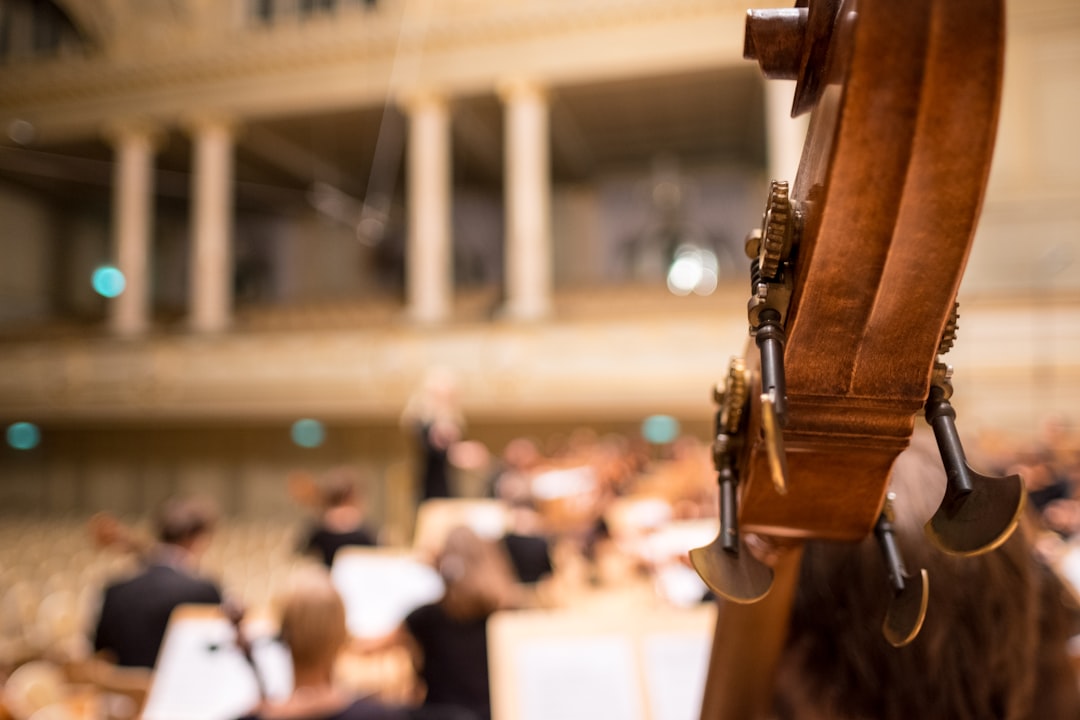Is Double Bass Hard to Learn?
It has always seemed to me somewhat controversial to talk about how difficult any particular instrument is to play. Likewise, I think it is uncontroversial that most of us have opinions on which instruments seem more difficult than others, at least at first glance. These intuitions are not always true, but some might be, even if we avoid the conversation. Is the sensitivity of the piano’s keys more difficult to master than the pedals of an organ? Is organ “more difficult” than piano simply because it has pedals in addition to its manuals? You would have to ask someone who is both an expert organist and an expert pianist for a better opinion than mine. However, I have a few insights on the bass and cello.

There are some good reasons why it is a faux pas to make certain comparisons. It can demotivate musicians of all levels. You do not want to find yourself in a position where you think your instrument is too difficult to learn compared to others. I most certainly have been demotivated while learning a new piece and struggling with intonation—that monster all bassists struggle with—while a friend of mine plunks out my solo perfectly on a piano to guide me, almost as if in mockery. You never want to feel like you can’t do it, and you never want to be in a position of blaming your choice of instrument for it.
A second issue with this discourse is about the dignity of the instruments themselves. I do not think music teachers relish the idea of their students falsely believing that they are learning some kind of “joke” instrument that is not capable of producing interesting music because it is too clumsy or difficult to master. If everyone wanted to be a violinist or a pianist, we would not have orchestras! And we also do not want to create hierarchies among musicians where some are privileged more than others because they play “difficult” instruments. Fostering this kind of tribalism is antithetical to the idea of the orchestra where we each have our role as part of a collaboration.
That said, there certainly are learning curves for instruments that can hamper development. A great example of this is the fipple style mouthpiece. That may be a new term for you, but you have likely played on a fipple flute before: the recorder is an example of one. The physical mechanics of producing an even tone with a fipple is simpler than that of a transverse flute (though it is more limited in timbre, dynamics, and articulation), so producing a sound on it is relatively immediate without much training. You just blow into it, more or less. Despite the relative ease of producing a sound, the fingerwork of recorder-playing is comparable to a transverse flute with finger holes instead of keys, as flutes once had. One might say that the Baroque alto recorder is thus easier to learn than the keyless transverse flute of similar Baroque design, but even that may remain controversial to dedicated recorder players.
Let us return to the string bass and some thoughts on the instrument and its difficulty. I outline four particular challenges of the bass that are not shared by its closest cousins in the modern orchestra (namely, the violin, viola, and cello):
- The size of the fingerboard means that pitches are further apart.
- The body of the instrument is big, and it takes longer to resonate, especially on the E string.
- The instrument is poorly anchored against the body when played standing, held in place only by the left hand as the player stops the strings with some leverage from the contact of the bow itself.
- The bow is short and heavy.
The first point is perhaps the most notable difficulty of learning and playing bass. Many people underestimate how huge the double bass really is. The bass is so big that it is the only modern orchestral string instrument in which the 3/4 size is the standard for the majority of adult musicians, not the 4/4 size! The 3/4 bass has a scale of 42 inches. For comparison, a long scale bass guitar has a scale length of 34 inches. I play a 7/8 size double bass, so the scale length of mine is close to 10 inches longer than that of a bass guitar. A full size cello has a scale length of 27 and a half inches. The locations of pitches on a stopped fingerboard are determined logarithmically by ratios, so every pitch on the double bass is significantly further apart than the frets of a bass guitar and the finger positions of a cello. Because we cannot make our hands bigger, a double bassist needs to move their left hand around a lot more even to play the simplest things. On cello, one can play two octaves of the C major scale without shifting from first position. On bass—where the whole hand span can only accommodate two pitches in a musical scale—one cannot even play a single octave of C major without shifting, and a second octave of C major brings the hand into thumb position (i.e., above the twelfth fret in guitar-speak). It can be illustrative to pay attention to an orchestra performing Baroque or Classical era music and watch a bassist doubling the cello part. Note how much more the bassist shifts to play the same thing. It can certainly feel like a handicap, especially when the intonation of these wide distances can be harder to lock down. The bass feels like a more “athletic” instrument with the need for broad movements in the left hand constantly.
Example: Watch the first minute or so of Mozart’s Eine Kleine Nachmusik, IV. Rondo Allegro, paying close attention to the bassist and the cellist when in frame, noting the more frequent and awkward position shifts of the bassist.
The second point is about tone. Playing an instrument is not just a technical exercise of body movements. Ideally, one wants to sound good, too! This can be harder to achieve in the lower octaves of the bass. The thicker, longer strings need more time to resonate. Quick, spiccato-like bowings are difficult to master. Instead of sounding crisp and separated, they often sound “muddy” and elided together because of the need for time in between them. When you are doubling a cello part and the music was written more in mind for the cello than for your own, again it can feel like a handicap. The stereotype of bassists is that they sound “clumsy” at times in their playing, but it is an actual limitation of the instrument’s resonance and frequency of attack. Bear in mind that one must also allow a big, vibrating string to stop vibrating before starting it again for the next note. It can feel like the composer wants you to play basketball with a 5 pound medicine ball.
The third point can be partially remedied by playing the bass while seated on a stool, but this cannot always be accommodated, and the standard method of performing bass is to play while standing. Violinists, violists, and cellists all have a performance technique that allows the instrument to be held in place against the body without the use of arms, leaving both hands free to stop and bow the strings. They also tend to move their arms, mostly, when shifting, though you might catch a cellist leaning over their instrument in thumb position. I always tell my students that playing a bass is like leading it in a dance. The left hand holds the neck, the bow braces it against your legs with each attack, you lean one way, then another, then spin the bass ever so slightly to reach the A and E strings. Eventually, one learns the ever-so-subtle body positions in the bass dance—not to be confused with the basse danse, a medieval French dance form.
As for the last point, there is not too much to say that is not obvious. A shorter bow means shorter, less variable bow draw speeds. The heaviness means that the bass is the only modern string instrument in which the underhand German bow grip is sometimes still used. It is my own preferred bow style, but it does make playing the E string more difficult due to the awkward angle.
Personally, I have found none of these specific issues with the cello or bass guitar, but those instruments come with their own challenges. Multiple stops on cello can be quite demanding, and, in general, much more is expected of the instrument by composers. That is not to say that the solo double bass repertory is easy—the level of virtuosity is similar, given each instrument’s characteristics. Likewise, if you have ever seen a true slapping/tapping master of bass guitar, you can be blown away by the virtuosity of that level of playing. As with actual dances, the bass dance and the cello dance—or violin or flute or French horn dances—are all difficult in their own ways, and one must accept the peculiarities and challenges of one’s own instrument and even embrace them.
Just don’t do the bass dance backwards and in heels. Always wear flats if you are going to be standing for three hours, or else playing bass will be much harder than it needs to be!



